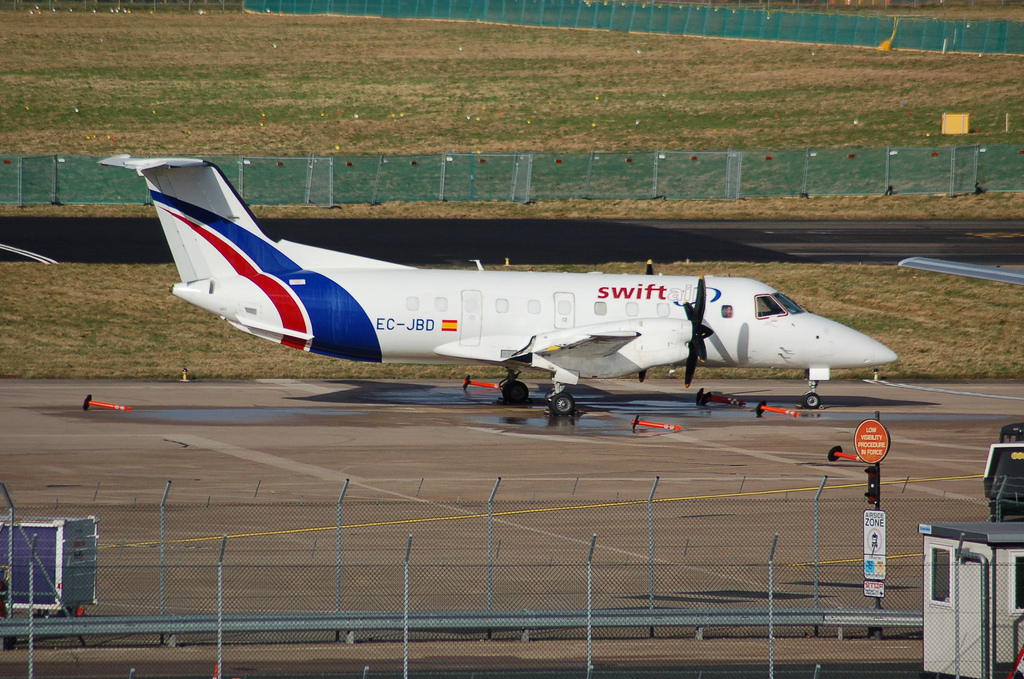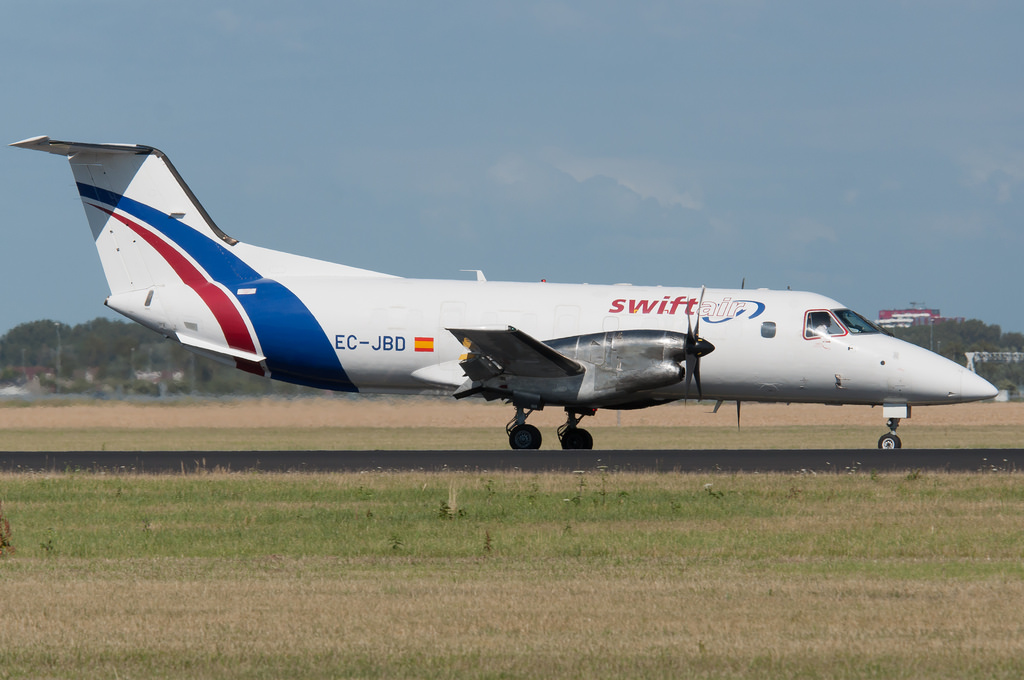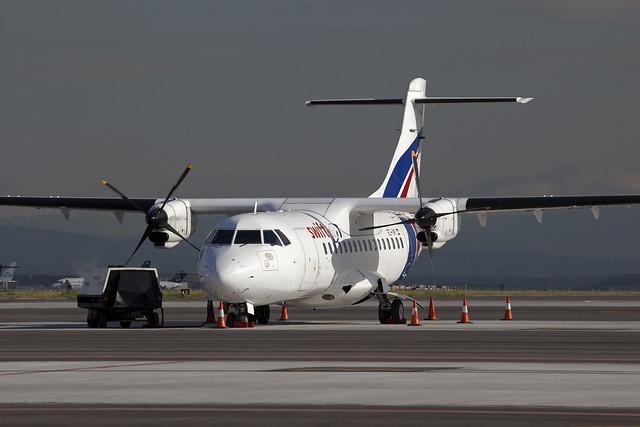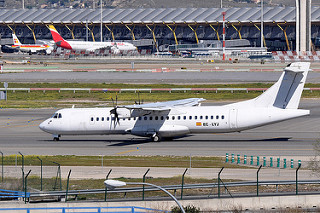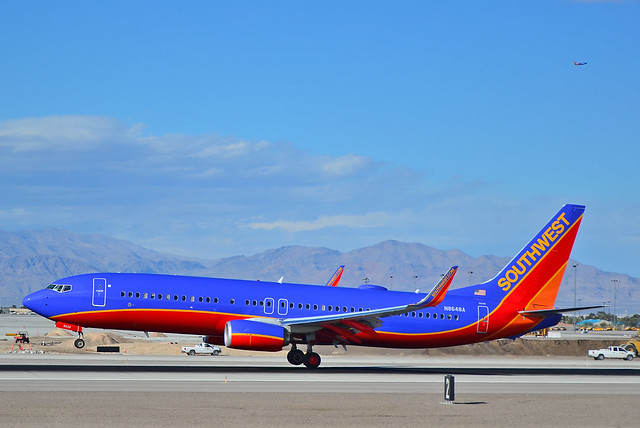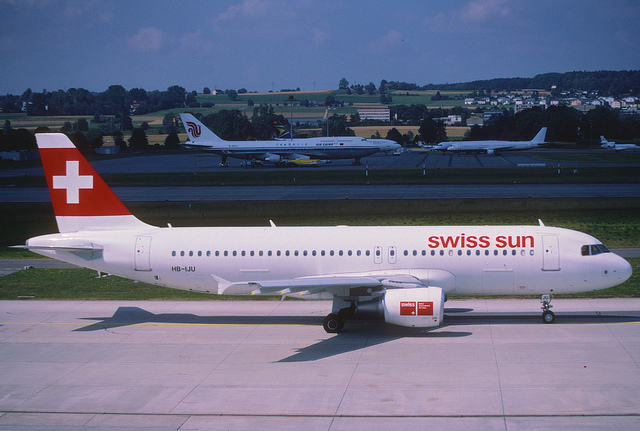Swiftair E120 at Amsterdam on Jan 18th 2016, took out runway edge lights on takeoff
Last Update: November 7, 2018 / 17:08:16 GMT/Zulu time
Incident Facts
Date of incident
Jan 18, 2016
Classification
Accident
Airline
Swiftair
Departure
Amsterdam, Netherlands
Destination
London Stansted, United Kingdom
Aircraft Registration
EC-JBD
Aircraft Type
Embraer EMB-120 Brasilia
ICAO Type Designator
E120
On Apr 10th 2016 the Dutch Safety Board reported that a post flight examination of the aircraft revealed damage to the fuselage and a propeller. A runway inspection at Stansted showed no anomaly, however, a runway inspection at Amsterdam revealed a number of broken runway edge lights at the right hand side. The DSB stated: "it seems the aircraft hit those lights during takeoff". An investigation has been opened.
The aircraft remained on the ground in Stansted until Jan 22nd 2016, then ferried to Spain maintaining FL100 all the way. The aircraft remained on the ground in Spain until Feb 22nd 2016 before resuming service.
On Nov 7th 2018 the Dutch Onderzoeksraad (Dutch Safety Board DSB) released their final report concluding the probable causes of the serious incident were:
Given the factual information it is concluded that the EMB-120 aeroplane made a misaligned take-off from Runway 24 at Amsterdam Airport Schiphol, at night. During take-off, the crew interpreted the right-hand side runway edge lights as the runway centre line lights. Evidently, visual cues provided in the form of taxiway markings and lighting turned out to be insufficient for a correct guidance of the aeroplane from the taxiway to the runway centre line. The large turning angle, required to align the aeroplane with the runway centre line, in combination with the discontinuity of the taxiway S5 centre line and absence of the taxiway centre line lighting have contributed to the misaligned take-off. In addition, the ATC clearance during the turn from taxiway B onto S5 and Runway 24 might have distracted the flight crew.
During the take-off roll several runway edge lights were struck by the nose landing gear of which the pilots were unaware. It is suspected that, on several occasions, the edge lights were catapulted leading to damage to the aeroplane. Despite the sustained damage, the aeroplane was able to take off and reach its destination airport. No other damage occurred. The absence of centre line lighting on taxiway S5 is not in correspondence with the specifications set in CS ADR-DSN.M.710.
The absence of a continuous centre line marking on taxiway S5 leading to the centre line of Runway 06/24 is not in correspondence with the specifications set in CS-ADR-DSN.L.555. This was corrected after the occurrence had taken place.
LVNL was aware of the risks of intersection take-offs before the incident occurred. However, this did not lead to operational measures by LVNL.
Intersection S5 was also a recommended intersection outside the uniform daylight period despite the fact that the intersection did not have centre line lighting.
The LVNL report does not consider the question of whether intersection S5 is justifiably designated as a ‘recommended intersection’ in the Operations Manual and if offering the intersection concerned is a wise choice.
After the decision was taken not to install centre line lights on intersection S5, LVNL retained the qualification of intersection S5 as a ‘recommended intersection’ in the Operations Manual. There was no reconsideration.
The DSB summarised the sequence of events:
On 18 January 2016 an Embraer EMB 120 ER “Brasilia”, with registration EC-JBD, performed a cargo flight from Amsterdam Airport Schiphol in the Netherlands to London Stansted Airport in the United Kingdom. On board were two pilots, and at approximately 17.25 hours the take-off was performed from Runway 24. The flight continued towards the destination airport where a landing was performed and at 18.40 hours the aeroplane was parked. After shutdown, the ground crew discovered holes in the right-hand side fuselage. Furthermore, the right-hand propeller blades were damaged and in one propeller blade a metal wire was found embedded in the leading edge. Following this damage the local authorities were notified, including the Air Accidents Investigation Branch (AAIB).
According to the flight crew, nothing out of the ordinary happened during the flight. The London Stansted Airport authority initiated a runway check, however, no irregularities were found. The AAIB notified the Dutch Safety Board (DSB) of the event and provided information on the metal wire found in the propeller blade at London Stansted.
Following this information, the DSB made inquiries at Amsterdam Airport Schiphol about occurrences that night and asked if a check could be performed on Runway 24. Amsterdam Airport Schiphol (AAS) had already performed a runway check the evening before, which revealed that seven runway edge lights were destroyed. From this, it was suspected that the event occurred at Amsterdam Airport Schiphol. The DSB classified it as a serious incident and started an investigation as the State of Occurrence.
The DSB analysed:
After leaving parking stand B66 at Amsterdam Airport Schiphol, the flight crew followed the taxi clearance instructions as given by the ground controller. While taxiing on taxiway B, the ground controller offered an intersection take-off, either from S4 or S5. The crew accepted the ground controller’s offer and elected S5 whereafter the ground controller approved this and gave a hold short instruction for S5.
Take-off clearance was given by the runway controller just before turning onto intersection S5 while the aeroplane was taxiing. Apart from the take-off clearance the flight crew was also instructed to stay on the frequency. The runway controller call was read back by the first officer and the CVR transcript reveals that the instruction to stay on the frequency was a surprise for the flight crew and the take-off clearance was discussed. In the meantime the aeroplane continued to taxi on S5 and the flight crew performed final checklist items.
Heading instructions after departure were given by the runway controller while the aeroplane was leaving exit S5 and turning onto runway 24. At this time the controls were handed over to the first officer and as a consequence the ATC call read back was done by the captain. Given the ground radar accuracy it is evident that at this time the aeroplane was on the right runway edge line and was misaligned for take-off. There is a 20 seconds time delay between the moment that heading instructions were given and take-off power was selected. Apart from the take-off checklist items no other conversation was made between the two flight crew members.
...
Although visual cues might be available, due to workload and/or other flight crew attention the determination if the aeroplane is lined up correctly might be difficult to make. A runway heading check is not sufficient to establish if the aeroplane is also laterally lined up correctly on the runway. It takes some time to observe and distinguish between the lights and (colour) patterns to establish the lateral position of the aeroplane.
As noted in the Biggin Hill report of the AAIB (AAIB, 2015), the dominant common factor between misaligned take-offs is that a visually compelling line of edge lights was visible to the crew. This edge line with lights was assumed to be the centre line by the crew. There is nothing inherent in an individual edge light that distinguishes it from a centre line light when viewed along the axis, as both have a white colour. It is the pattern of edge lights, and the relationship of this pattern with other lights and visual cues, which identifies them as edge lights. If this complex relationship becomes disrupted or misinterpreted, pilots can lose situational awareness.
If individual edge lights could be identified as such directly, rather than through a process of interpretation, a crew would notice their error more easily in case they are lined up incorrectly. Modern lighting technology offers more options to identify lights directly than the tungsten lighting technology on which the current standards are based.
Metars Amsterdam:
EHAM 181725Z 14007KT CAVOK M01/M05 Q1017 NOSIG=
EHAM 181655Z 13007KT CAVOK M01/M05 Q1017 NOSIG=
EHAM 181625Z 13007KT 110V170 CAVOK M02/M06 Q1017 NOSIG=
EHAM 181555Z 13006KT CAVOK M02/M06 Q1017 NOSIG=
EHAM 181525Z 14005KT CAVOK M01/M06 Q1017 NOSIG=
EHAM 181455Z 13006KT 100V160 CAVOK M01/M05 Q1017 NOSIG=
Incident Facts
Date of incident
Jan 18, 2016
Classification
Accident
Airline
Swiftair
Departure
Amsterdam, Netherlands
Destination
London Stansted, United Kingdom
Aircraft Registration
EC-JBD
Aircraft Type
Embraer EMB-120 Brasilia
ICAO Type Designator
E120
This article is published under license from Avherald.com. © of text by Avherald.com.
Article source
You can read 2 more free articles without a subscription.
Subscribe now and continue reading without any limits!
Read unlimited articles and receive our daily update briefing. Gain better insights into what is happening in commercial aviation safety.
Send tip
Support AeroInside by sending a small tip amount.
Related articles
Swift AT42 at Ostrava on Oct 31st 2023, engine fire
A Swiftair Avions de Transport Regional ATR-42-300 freighter, registration EC-IVP performing flight WT-1907 from Ostrava (Czech Republic) to Cologne…
Swift B734 at Montpellier on Sep 24th 2022, overran runway on landing
A Swiftair Boeing 737-400 freighter on behalf of West Atlantic Sweden, registration EC-NLS performing flight SWN-5745 from Paris Charles de Gaulle to…
Swift AT72 at Palma Mallorca and Madrid on Feb 19th 2021, tyre damage on departure
A Swiftair Avions de Transport Regional ATR-72-212A, registration EC-LYJ performing flight from Palma Mallorca,SP to Madrid,SP (Spain) with 2 crew,…
Swift B733 at Dayton on Mar 17th 2022, dropped tyre on departure
A Swift Air Boeing 737-300, registration N397SW performing flight WQ-257 from Dayton,OH to Newark,NJ (USA), departed Dayton's runway 24R and…
Swift B734 near Cologne on Dec 22nd 2021, loss of cabin pressure
A Swiftair Boeing 737-400 on behalf of DHL, registration EC-NMK performing freight flight QY-8842 from Cologne (Germany) to Madrid,SP (Spain), was…
Newest articles
Southwest B738 at St. Louis on Apr 19th 2024, engine failure
A Southwest Airlines Boeing 737-800, registration N8648A performing flight WN-5907 from St. Louis,MO to Sacramento,CA (USA), was climbing out of St.…
Edelweiss A320 at Zurich on Apr 20th 2024, rejected takeoff due to engine failure
An Edelweiss Airbus A320-200, registration HB-IJU performing flight WK-140 from Zurich (Switzerland) to Sharm el Sheikh (Egypt), was accelerating for…
Subscribe today
Are you researching aviation incidents? Get access to AeroInside Insights, unlimited read access and receive the daily newsletter.
Pick your plan and subscribePartner

A new way to document and demonstrate airworthiness compliance and aircraft value. Find out more.

ELITE Simulation Solutions is a leading global provider of Flight Simulation Training Devices, IFR training software as well as flight controls and related services. Find out more.

Your regulation partner, specialists in aviation safety and compliance; providing training, auditing, and consultancy services. Find out more.
AeroInside Blog
Popular aircraft
Airbus A320Boeing 737-800
Boeing 737-800 MAX
Popular airlines
American AirlinesUnited
Delta
Air Canada
Lufthansa
British Airways
